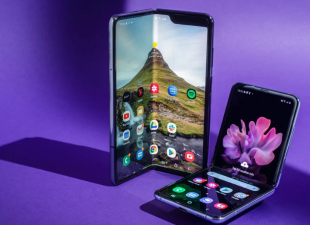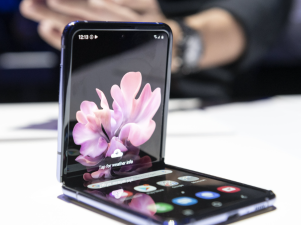Foldable phones are phones whose screens can be bent through a hinge mechanism, so that they can be unfolded into the size of a tablet or folded into a smaller size. This design aims to combine the convenience of smartphones and tablets to provide a versatile device that can adapt to different usage scenarios.
Foldable phones are phones whose screens can be bent through a hinge mechanism, so that they can be unfolded into the size of a tablet or folded into a smaller size. This design aims to combine the convenience of smartphones and tablets to provide a versatile device that can adapt to different usage scenarios.
In recent years, the mobile phone industry has fallen into an innovation bottleneck, and the competition among major manufacturers in terms of processor performance, camera capabilities, battery life, etc. has gradually become homogenized. Consumers have also become aesthetically fatigued by the stereotyped straight-panel mobile phone form and are eager to see truly innovative products. At this time, foldable screen mobile phones came out of nowhere, breaking the limitations of traditional mobile phone forms and bringing new vitality to the entire industry.

2019 is regarded as the first year of foldable screen mobile phones. Samsung took the lead in launching the Galaxy Fold, and Huawei followed closely and released the Mate X. The advent of these two mobile phones is like throwing a boulder into a calm lake, which has aroused strong attention and widespread discussion in the market. Although there are many problems with early foldable screen mobile phones, such as high prices, immature technology, and obvious creases, they have undoubtedly opened up a new development path for the mobile phone industry.
Since then, more and more mobile phone manufacturers have begun to get involved in the folding screen field, increasing their R&D investment and launching their own folding screen products. The technology of folding screen mobile phones is also constantly improving, from the initial single folding to today's double folding and triple folding, from heavy and clumsy to light and portable, from obvious creases to almost no creases. Every technological breakthrough brings folding screen mobile phones one step closer to consumers.
Regarding the question of "Foldable phones: mainstream in the future or short-lived trend?", the following aspects can be explored:

1. Technology maturity:
With the advancement of display technology and material science, the durability and reliability of foldable screens are gradually improving. If these technical problems can be solved, foldable phones may become an important branch in the market.
2. User demand:
Whether there are enough users in the market who need or are willing to pay extra for foldable phones is directly related to the market prospects of foldable phones. If users think that foldable phones provide enough practical benefits, they may become more popular.
3. Price factors:
The price of foldable phones is usually higher than that of traditional smartphones. As production technology improves and economies of scale are achieved, prices may fall, making foldable phones more attractive to a wider range of consumers.
4. Competition and innovation:
As more manufacturers enter the market and launch their own foldable phones, competition may drive product innovation and improvement, which may make foldable phones mainstream.
5. Ecosystem support:
Whether application developers and content providers support the format of foldable phones is also a key factor in determining their success. If foldable phones can provide unique application experiences, they may be more popular.
6. Alternatives:
Other forms of flexible display technology, such as rollable screens or other emerging display technologies, may provide better solutions and thus affect the market position of foldable phones.

